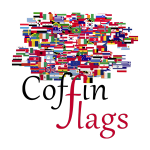Description
 Sudan or Sudan, officially the Republic of Sudan, is a country in Northeast Africa. It is bordered by Egypt to the north, the Red Sea to the northeast, Eritrea to the east, Ethiopia to the southeast, South Sudan to the south, the Central African Republic to the southwest, Chad to the west, and Libya to the northwest. It has a population of 43 million people (2018 estimate) and occupies a total area of 1,886,068 square kilometres (728,215 square miles), making it the third-largest country in Africa (Formerly the largest until July 2011). Sudan’s predominant religion is Islam, and its official languages are Arabic and English. The capital is Khartoum, located at the confluence of the Blue and White Nile.
Sudan or Sudan, officially the Republic of Sudan, is a country in Northeast Africa. It is bordered by Egypt to the north, the Red Sea to the northeast, Eritrea to the east, Ethiopia to the southeast, South Sudan to the south, the Central African Republic to the southwest, Chad to the west, and Libya to the northwest. It has a population of 43 million people (2018 estimate) and occupies a total area of 1,886,068 square kilometres (728,215 square miles), making it the third-largest country in Africa (Formerly the largest until July 2011). Sudan’s predominant religion is Islam, and its official languages are Arabic and English. The capital is Khartoum, located at the confluence of the Blue and White Nile.
The current flag of Sudan was adopted on 20 May 1970 and consists of a horizontal red-white-black tricolour with a green triangle at the hoist. The flag is based on the Arab Liberation Flag shared by Egypt, Iraq, Syria and Yemen and uses a subset of the Pan-Arab colours in which green is less significant. Red, white, black and green are called the pan-Arab colours and have been historically linked to the Arab people and Islamic religion for centuries. The colours stand for Arab unity and independence. The red stripe represents Sudan’s struggle for independence and many other struggles, and the sacrifices of the country’s martyrs. The white represents the people, light and optimism. It also represents the White Flag League which was a nationalist group that rose up against colonial rule in 1924. The black represents Sudan; in Arabic ‘Sudan’ means black. It also represents the black flag of nationalists who fought colonial rule during the Mahdist Revolution, late in the 19th century. Green represents Islam, agriculture and the prosperity of the land.







